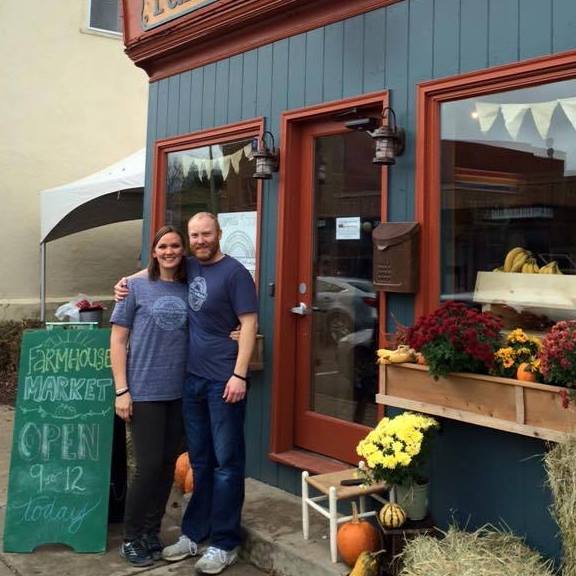By Nancy Weingartner Monroe
After Kendra Rasmusson and her husband Paul moved back to her hometown of New Prague, a rural community about 45 miles south of Minneapolis, they discovered the nearest co-op was 25 miles away. This might not have been a big deal for most people, but the couple’s 2-year old had just been diagnosed with epilepsy and a clean diet was one of the ways to help control the seizures.
Paul kept his day job in finance, making the daily commute to the Twin Cities, and Kendra Rasmusson set about opening a co-op in a historic building in the town of 7,500. What’s unusual about their story is that after getting the 650-square-foot store up and running, they discovered they couldn’t make money with a traditional employee-staffed model.
“We saw Snap (Fitness) two doors down and thought, ‘why couldn’t we follow their model?’” she says.
Snap is a membership-based fitness club where members are given a keycard so they can access the facilities 24/7. There are no employees to check guests in or supervise their exercise session. The door locks securely once the exerciser is inside and motion-sensor lights flick on
The Rasmussons applied the Snap model to their business, Farmhouse Market, which opened in October 2016. Membership to the co-op is $99 a year. For that fee, members receive a family keycard that gets them in the door whether they want to buy a tomato or laundry detergent at noon or midnight. After selecting their produce, meat, dairy and a few prepared meals, liked organic mac and cheese, they check themselves out using a barcode scanner and an iPad. Produce is sold by the piece rather than by the pound, and members get a 5 percent discount on every purchase. As many items as possible are sourced from local farms.
Since the couple couldn’t afford a proprietary POS system, they worked with their local bank to design a user-friendly checkout system using an iPad.
Rasmusson says she isn’t worried about theft. Members sign a legal agreement that basically says they agree to pay for what they take, but that’s just a formality. Via security cameras, Rasmusson can monitor the store’s activity 24/7 from her iPhone.
But the real reason people are honest isn’t so much in the policing, but because the co-op has 200 members and “We kinda all know each other,” she says.
To prove her point, Rasmusson tells about the time one member let someone in who had knocked on the door, and another member abandoned her shopping to keep an eye on the stranger, culminating with her asking him to leave. She later reported the incident to Rasmusson.
Their theft rate is about the same as the 5 percent norm for grocery stores, but she says the average theft for self-checkout systems is closer to 20 percent.
Surveillance can also provide valuable customer feedback. If Rasmusson notices someone enter the store and then leave several minutes later empty-handed, she can email to ask about their shopping experience. If they couldn’t find something they were looking for, she can source it for them.
The couple is planning to become an even more valuable resource to the town. The store’s upstairs space is used for a community center where classes and events are held. The small lot next to the store has been transformed into a community garden, with three compost boxes, a rain barrel, apple trees and berry bushes. The produce is free to those who need it, Rasmusson says.
When shoppers ask for fresh herbs, like cilantro, she’ll hand them a pair of scissors and tell them to go into the garden and cut what they need. People are surprised at her generosity, but “cilantro, once it’s cut, is a ticking time bomb of freshness,” she says.
Now that she has three children, a core group of volunteers help her when the store is open for limited hours three days a week, and with other projects.
Compounding on their existing food on demand, the co-op is applying for a grant to fund a program where volunteers deliver groceries to seniors and also do a wellness check in conjunction with the local hospital.


